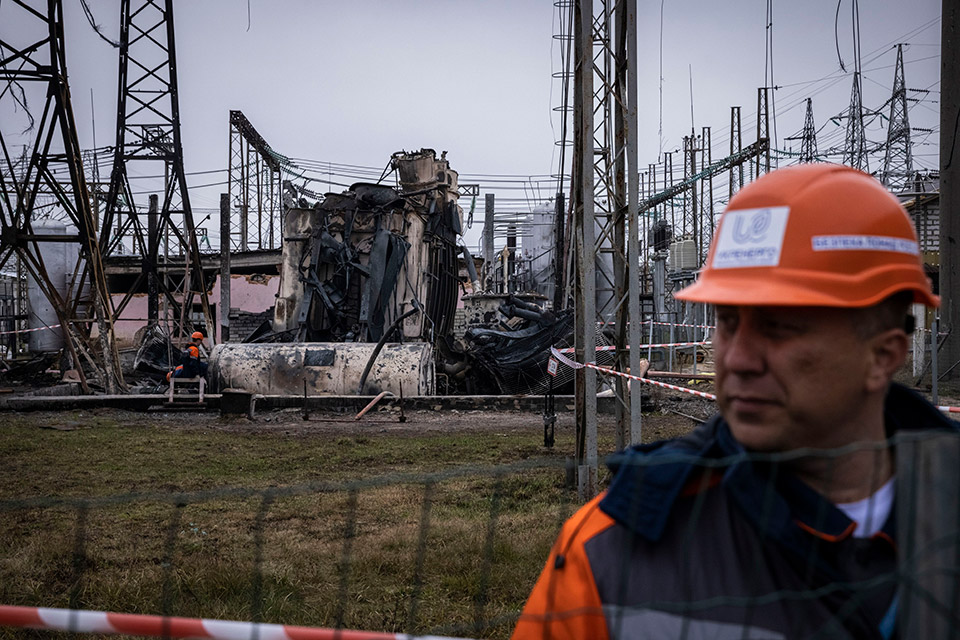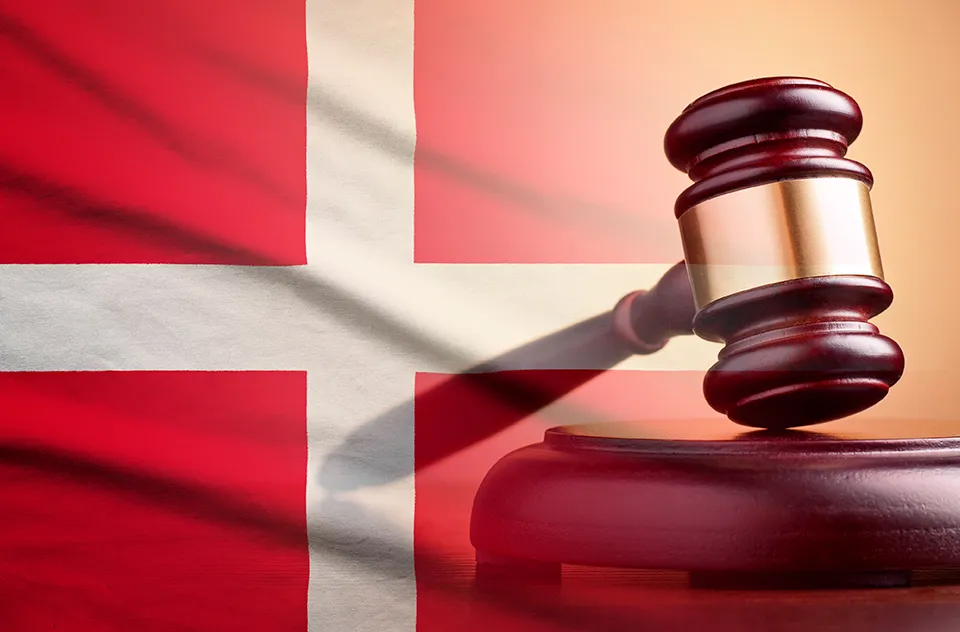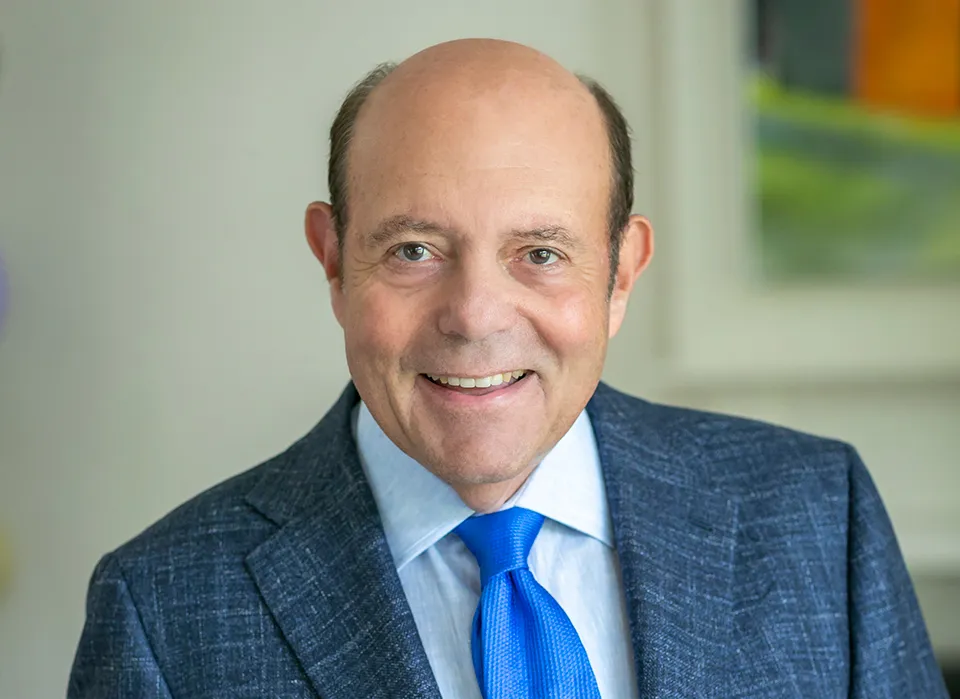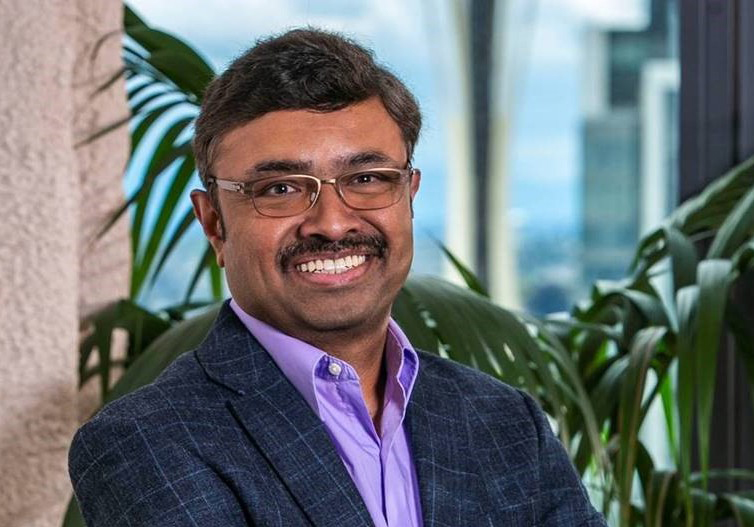There has been a lot of soul-searching in recent years at the European Bank for Reconstruction and Development (EBRD).
It was set up in 1991 to help central and eastern Europe transition to liberal democracy. That job seemed largely accomplished when many former communist states became integral parts of the EU. Then came Russia’s first invasion of Ukraine and illegal annexation of Crimea in 2014 – leading to an exit by the bank from what was by far its biggest country of operation.
A decision to expand into north Africa in 2012 also proved difficult when the initial promise of the Arab Spring descended into civil wars and an eventual refortification of the old political and economic structures.
The bank’s subsequent plan to expand to sub-Saharan Africa, although justifiable, reinforced the sense of an institution seeking a new role. This was first mooted five years ago, before Odile Renaud-Basso took over as EBRD president from former British civil servant Sir Suma Chakrabarti in 2020.
Ukrainian incentive
Russia’s invasion of Ukraine last February has now given the EBRD’s mission on its home continent much greater urgency.
The EBRD considers itself Ukraine’s largest institutional investor, and the country’s need for multilateral finance is huge just to sustain its war economy, never mind tackling the hundreds of billions of dollars of reconstruction costs.
Moreover, the war seems to have pushed Ukraine more towards democracy and a market-led economy, a key requirement for help from the EBRD.
Russia’s invasion has also unexpectedly revived the European Union’s enlargement programme, which now involves 10 countries. Ukraine and neighbouring Moldova applied for EU membership immediately after the 2022 invasion. In November this year the European Commission gave the green light to opening negotiations with them. EU accession processes should add to incentives for political and economic reform in Ukraine and Moldova, as well as other candidate countries in the western Balkans.

In a meeting with Ukrainian president Volodymyr Zelenskyy last year, Renaud-Basso committed to a financing target for Ukraine of €3 billion by the end of 2023. The EBRD reached that target in October and hopes to maintain the level at €1.5 billion or more next year and beyond.
The bank has only been able to offer so much support due to one-off guarantees over specific projects from its shareholder governments, primarily the G7 states and the EU. These guarantees require a legislative approval process that can be cumbersome. Furthermore, they only allow a leverage ratio of two to one, compared to four or five to one for the EBRD’s paid-in capital.
As a result, the EBRD is in the middle of its third capital increase when Euromoney sits down with Renaud-Basso, a former French treasury secretary general who is also the first woman to head a multilateral development bank (MDB).
“It’s been triggered by Ukraine, but it will allow us to avoid having a trade-off between supporting Ukraine and supporting our other countries of operation,” she says of the proposed increase, which the EBRD’s board of directors set at €4 billion in mid November.
After the capital raising, which would be effective from the end of 2024, the shareholder guarantees programme in Ukraine will be smaller in size, even though a portion of the €50 billion the EU has budgeted for Ukraine is destined for guarantees over MDB financing. The guarantees will in future be more restricted to especially risky counterparts, such as municipalities that are unable to pay back their debt.
“The capital increase will give us the capacity and the buffer to take the risk in Ukraine on our balance sheet,” Renaud-Basso tells Euromoney when we speak at the IMF-World Bank annual meetings in mid-October.
She says shareholder talks on the capital increase have revolved around three topics: what is the potential size of investment in Ukraine, depending on various scenarios for the war; what should be the level of its involvement in Ukraine’s public versus private sector; and how its involvement in Ukraine should help push forward reform, including that in the governance of state-owned enterprises.
The last issue is critical as it could prepare state-owned firms for an eventual privatization once the state of the war allows for greater private-sector involvement. Renaud-Basso offers the example of the work the EBRD has done in Ukraine’s banking sector since the mid-2010s.

“There’s been a huge transformation in the banking sector, not just recapitalization and cleaning up the balance sheet but also improving governance to bring international experts and highly qualified independent directors onto the boards,” she says. “It’s been quite exemplary and has proven extremely efficient in ensuring that the banks are well managed and could cope with the war. This is seen as a step towards privatization.”
The EBRD is now working with Ukraine on governance reform at state-owned companies in sectors such as rail and electricity. Since the war, its biggest projects in Ukraine have included financings in the hundreds of millions of euros for bomb damage repairs by the state electricity network operator, Ukrenergo, and to help state-owned company Naftogaz with the purchase and storage of gas.
“We will keep a strong focus on helping the country to maintain key infrastructure functioning,” Renaud-Basso says.
Looking ahead, she adds: “I think we will move more towards reconstruction, working with municipalities to help them rebuild basic infrastructure that’s been destroyed.”
In this area, the bank is already working with the western city of Lviv and the southern city of Kherson, which spent eight months under Russian occupation last year.
Renaud-Basso also gives the example of a €5 million financing the bank did last year to allow access to the internet in community shelters, using Starlink operated by Elon Musk’s SpaceX.
“It’s very important to be agile and to be able to act quickly as the needs evolve, and to help Ukrainians do that,” she says.
For a private-sector focused bank like ours, it’s quite hard to find a model that works in terms of the economics of an investment in climate adaptation
Odile Renaud-Basso, EBRD
In a hopeful tone, the EBRD president notes some tentative improvement in demand from the private sector in areas such as agri-business, logistics and pharmaceuticals.
Since the war started, most of the EBRD’s lending to privately owned companies has been via local banks under a new portfolio guarantee programme, amounting to several hundred million euros. This has the benefit of the multiplier effect on the economy, as the local lender still takes at least 50% of the risk. It is also something the EBRD had to roll out in the interests of speed: before 2022 its decisions on guarantees were on a more time-consuming loan-by-loan basis.
It helps that the EBRD has a lot of prior knowledge of the banks from other programmes in areas like trade finance and from having advised on the sector’s restructuring after the mid 2010s. The EBRD is also a large minority shareholder in BNP Paribas subsidiary, Ukrsibbank, and the local unit of Austria’s Raiffeisen, which is the country’s largest foreign-owned bank.
“The portfolio guarantees are working well as Ukrainian banks have a lot of liquidity. But of course they want to limit their risks, so we will continue to provide this instrument,” says Renaud-Basso.
Increased demand for the EBRD’s resources is not just coming from Ukraine. MDBs around the world are experiencing much greater calls on their funding because of efforts to tackle climate change and, more recently, because of tougher international financing conditions from commercial sources, the result of higher interest rates. The impact of this has been especially severe in African countries.
Callable capital
As rich-country shareholders deal with their own fiscal constraints, a G20-sponsored capital-adequacy frameworks review last year laid out recommendations for how MDBs could use their balance sheets more aggressively and dynamically, including by mobilizing more private-sector money.
Like other MDBs, the EBRD is examining whether it could use callable capital in less extreme scenarios than those previously envisaged, allowing a further boost to its capacity. However, Renaud-Basso acknowledges there is no clear solution to avoid this impacting the balance sheets of its shareholders, which could be a sticking point.
The EBRD made some changes in 2016 to maximize how much it can take callable capital into account in its risk appetite without compromising its credit rating. This move has allowed an increase in its lending capacity of around 40%.
More simply, a plan to test if hybrid debt is cost efficient and scalable has been another element of the discussions on the capital increase. Renaud-Basso expects to pilot hybrid debt issuance after the paid-in capital raising is complete, joining similar pilot schemes at other MDBs such as the World Bank.
Clearly, the EBRD has a lot more to do in Ukraine in terms of helping the country stabilize its economy during the war. When the fighting comes to an end, however, its level of financing in Ukraine could double to €3 billion a year – partly because there should be a greater appetite among private-sector partners.
“Now the clients we have are managing the situation,” says Renaud-Basso. “They continue their business; they need working capital. They are adjusting their operating capacity to the war situation, for example by changing location and developing more business in the western part of the country, but the plans are not for expansion. After the reconstruction, hopefully more people will return to Ukraine. The dynamics of investment and growth will be very different.”
Being more focused than most MDBs on the private sector makes it is easier to diversify the bank’s risks within a single country. Nevertheless, the need to avoid a trade-off between Ukraine and other countries via the capital increase is important for the EBRD because too much exposure to Ukraine could destabilize the institution.
With less than 10% of its total credit exposure, Ukraine was still only the EBRD’s third-largest country beneficiary at the end of last year: far behind Turkey and slightly behind Egypt. Renaud-Basso consequently sees plenty of margin to grow Ukraine as a proportion of the bank’s operations.
But the bank does not see Ukraine rising above 20% of its business, even if the war ends. Ukraine, after all, is much smaller in terms of its population and economy than Russia, which at the peak accounted for about 30% of the EBRD’s lending (Russia, in fact, remains a shareholder). Turkey and Egypt also have much bigger economies and populations than Ukraine.
The war in Ukraine pushed the EBRD to a €1.1 billion net loss in 2022, although this is not why it wanted a capital increase. Indeed, the EBRD is the highest capitalized and most liquid of the large MDBs, according to Scope Ratings.
There is a wider realization that generating more financing in local currency is fundamental to increasing the level of investment in emerging countries, because exchange-rate fluctuations have been very important
Odile Renaud-Basso
Impairment for credit losses in Ukraine and Belarus reached €1.4 billion, while its non-performing loan ratio rose from 4.9% to 7.9%. Writing off residual equity investments in Russia cost a further €1.1 billion.
The bank does not expect a further increase in the bad debt ratio due to Ukraine.
“What we see in 2023 is a stabilization of the situation,” says Renaud-Basso.
But there is no question that Ukraine is a risky place to operate – and not just because of governance and corruption weaknesses.
International donor support for Ukraine’s budget deficit has allowed it to move away from the monetary financing it was forced to undertake in early 2022. But the US is the single biggest national contributor to this support and therefore the prospect of a second Donald Trump presidency in the US is extremely worrying for Ukraine and for the EBRD.
Trump has consistently criticized the money spent helping Ukraine during his campaigning for next year’s election.
Clearly, increasing the EBRD’s capital to help Ukraine is crucial. The capital increase has, in addition, sparked a wider strategic debate on its priorities, not least because it is approaching the renewal of its strategic framework, which happens every five years.
The EBRD has sometimes struggled to increase its investment in less-poor countries in line with its shareholders’ wishes – especially in the Arab world and western Balkans. In May this year, the bank’s shareholders approved an amendment to its statutes to allow for an expansion after 2025 in Iraq and up to six sub-Saharan African countries, which it has indicated could comprise Benin, Côte d’Ivoire, Ghana, Kenya, Nigeria and Senegal.
Post-conflict countries will represent a much bigger area of work in the second half of the decade. Apart from Ukraine, the bank already operates in the West Bank and Gaza. Libya became a shareholder in 2019 with a view to receiving investment and policy support from the EBRD.
The environment
As at other MDBs, climate change is also growing in prominence. In its five-year strategic framework ending in 2025, the EBRD aimed for at least 50% green investment. As it has already achieved that level, it needs to decide about increasing the target.
It also needs to decide how to integrate biodiversity into its framework – something its shareholders have been pushing it to do – and how to do more to help its countries adapt to climate change.
All this is also particularly relevant for its new countries of operation – given the extent to which Kenya’s economy has been at the mercy of drought conditions, for example.
Up to now, climate change adaptation has been a relatively small amount of the bank’s work. Renaud-Basso gives the example of an investment the bank made in Morocco to help a port prepare for high water levels.
“It’s more challenging because it’s just a bit more costly, but you don’t necessarily have the monetary return to pay back your investment,” she says. “For a private-sector focused bank like ours, it’s quite hard to find a model that works in terms of the economics of an investment in climate adaptation.”
It is nevertheless vital, as recent incidents of drought or flooding show.
“You can see the impact climate change has and you can see the cost,” she says. “I think we are starting to see the real, concrete impact of climate change on society and business.”
More investment in mitigating climate change is partly why local-currency financing is likely to be a bigger area of work under the new strategic framework. Renaud-Basso sees a lot of eagerness among international private-sector investors to invest in renewable energy, yet consumer payments to a renewable-energy project are normally in local currency, putting the exchange rate risk on the borrowing country if the financing is done in dollars.
Greater focus on local currency plays into the wider desire for MDBs to bring in more private-sector investment. It also reflects the rising debt challenges of some emerging market countries due to higher dollar rates and the consequent depreciation of their currencies.
The bank already has a lot of experience in developing local currency financing, going back to the beginning of its operations in the 1990s. More than a quarter of its investments are in local currency today.
“We are trying to find solutions in various countries, case by case, on having access to local currency in a competitive manner,” says Renaud-Basso. “I think there is a wider realization that generating more financing in local currency is fundamental to increasing the level of investment in emerging countries, because exchange rate fluctuations have been very important. Particularly when it comes to mobilizing private investment in areas like renewable energy, this is a very big issue.”




